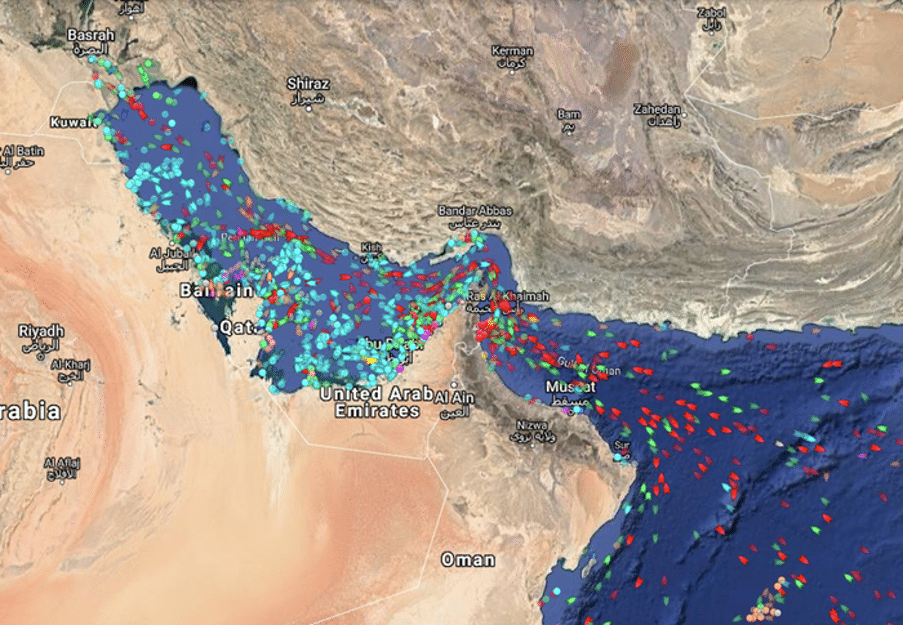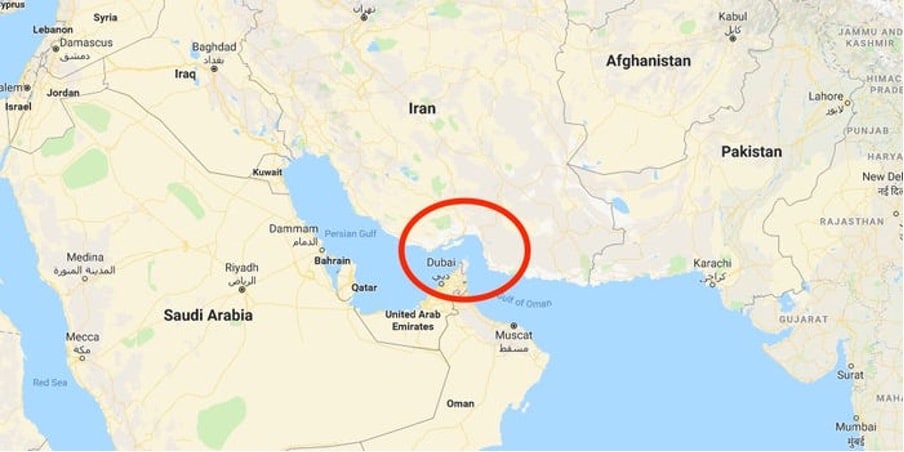According to the US Energy Information Administration, the Strait of Hormuz is the world’s most important oil chokepoint. Here’s why.
You will probably hear a lot about the Strait of Hormuz over the next few weeks, so I thought it would help to lay out the basics here.
To start with, let’s consider Brent Crude — widely regarded as the best global oil benchmark:
- In mid-2020, the covid-19 pandemic saw Brent Crude go negative for the first time ever.
- In 2021, Brent averaged just under $71 per barrel, prices former BP CEO Bernard Looney said made the FTSE 100 oil major a ‘cash machine.’
- In 2022, Brent rose to as high as $139 in the immediate aftermath of Russia’s invasion of Ukraine.
- And now in late 2023, Brent is remaining above $90 per barrel.
Oil and gas prices are remaining elevated for three reasons:
- Strong post-pandemic demand for energy
- Sanctions on Russian oil and gas exports
- Concerns that Iran could join a regional war in the Middle East
I have gone into considerable detail with daily reporting on the Israel-Hamas war elsewhere, but the key point to understand is that if Iran enters the war, then not only would US sanctions be strengthened over its oil exports, but the Middle East country might consider closing the Strait of Hormuz.

For context, Cayler Capital’s founder and CIO Brent Belote argues that sanctions alone could remove between one and two million barrels per day from the market ‘almost instantly.’
But the Strait would be a different ball game entirely: JP Morgan analysts argue its closure would ‘shut down the region’s oil trade, supercharging oil prices.’ However, the analysts also note that Iran has never taken this step — and for good reason.
Both the US and China would be united in opposition because any shut-down would send oil soaring, inflation soaring, and the global economy into the doldrums. Neither country can afford this right now — the US due to its deficit, and China for its collapsing real estate sector.
And this could easily become a tit-for-tat exchange. Between October 1973 (at the start of the Yom Kippur War) and March 1974, oil prices rose by over 300% as Arab nations led by Saudi Arabia imposed an oil embargo on Israel’s western supporters. It’s worth noting that China now buys most of the Middle East’s crude — and so the damage would be much lower today, if still considerable.
Iran has already called for Israel to face an embargo — with foreign minister Hossein Amirabdollahian explicitly calling for a block. However, other OPEC countries have ignored the call.
Saudi Arabia and Israel were on the verge of signing a US-backed deal for Saudi to up its oil production and also recognise Israel formally, in exchange for gaining weaponry and increased political support from the US. 2023 is not 1973, and despite the new war, old alliances are shifting.
Arguably, even though Saudi and Iran are in OPEC together, their enmity runs far deeper than the divisions between Saudi and Israel.
What is the Strait of Hormuz?
- The Strait is a strip of water between Iran and Oman, linking the Gulf of Oman to the Gulf north of it
- It’s 21 miles wide at its narrowest point, but the shipping lane is just two miles wide in either direction
- Saudi Arabia (a regional antagonist of Iran) is building masses of oil pipelines to reduce dependency on the Strait
- Iran controls seven of eight islands on the Strait and could in theory shut down all through-traffic
What is its significance to global oil markets?
Roughly 20% of the world’s total oil consumption passes through the Strait every day. For perspective, Vortexa data shows that this averaged out at 20.5 million barrels per day of crude oil equivalent between January and September 2023.

OPEC members including Saudi Arabia, UAE, Iran, Iraq, and Kuwait all export the majority of their crude through the Strait — hence the EIA’s view that it constitutes the world’s most important oil chokepoint.
The world’s largest LNG exporter, Qatar, sends more than 90% of its LNG through the Strait — and overall, 80 million metric tons or 20% of global LNG flows go through it every year. It’s an almost unimaginable amount of oil and gas; and the effect of any closure would be immediate and massive.
In early 2012, Iran threatened to close the Strait in response to international sanctions against its nuclear program. At the time, the US deployed naval forces to ensure the safe passage of ships, stating it would not tolerate a closure.
To this day, the US Fifth Fleet is tasked with protecting all commercial shipping in the area — the US retains some sanctions on Iranian oil, and Iran continues to threaten to disrupt the Strait if the US continues to hurt its economy. Of course, as noted above, this is a relatively empty threat as it would anger pretty much every state actor that matters.
However, the Marshall Islands Registry does still consider that vessels with links to the west — including both Israel and the US — now face a heightened threat of attack in the Strait. This could coincide with an anticipated ground invasion of the Gaza Strip by Israel.
An incident does not mean a shutdown
It’s important to highlight that just because there will likely be some escalation in the Strait, it does not mean there will be a complete shutdown. For context, the Strait of Hormuz has never been closed and yet:
- During the 1980-88 Iran-Iraq war, the two sides sought to disrupt each other’s oil exports
- In 1988, US warship Vincennes shot down an Iranian airliner, killing all aboard, in what Washington said was an accident and Tehran said was an attack
- In 2008, the US said Iranian vessels threatened three US Navy ships in the Strait
- In 2010, Japanese oil ship M Star was attacked in the Strait by Abdullah Azzam Brigades
- In 2012, Iran threatened to block the Strait in retaliation for US and European sanctions on its oil
- In 2015, Iran seized a container ship in the Strait and fired shots at a Singapore-flagged tanker which it said had damaged an Iranian oil platform
- In 2018, President Hassan Rouhani hinted Iran could disrupt oil trade through the Strait in response to US calls to obliterate Iranian oil exports
- In 2019, four vessels were attacked off the UAE coast just outside the Strait
- In 2021, Iran seized a South Korean tanker and detained its crew.
- In 2022, the US said that an Islamic Revolutionary Guard Corps Navy boat came within 150 yards of US ships in the Strait.
- In May 2023, Iran seized two oil tankers while they passed through the Strait.
- In July 2023, the US said it had intervened to prevent Iran from seizing two commercial tankers in the Gulf of Oman.
So when the headline comes — and it seems inevitable — remember that headlines exist to sell the news.
But if Iran does actually close the Strait of Hormuz under any variety of pressures, the war will escalate into regional conflict, oil will rocket, and so will inflation. And you can kiss any chance of a soft landing goodbye.
Thankfully, despite the rhetoric, this seems unlikely.
This article has been prepared for information purposes only by Charles Archer. It does not constitute advice, and no party accepts any liability for either accuracy or for investing decisions made using the information provided.
Further, it is not intended for distribution to, or use by, any person in any country or jurisdiction where such distribution or use would be contrary to local law or regulation.